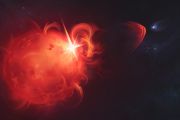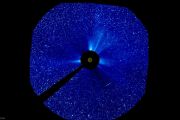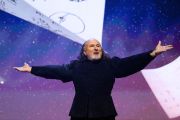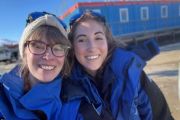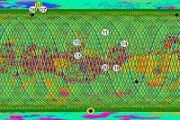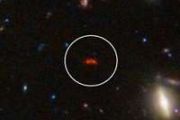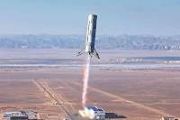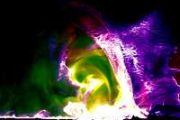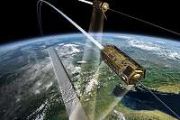
Copernical Team
Shake, rattle and launch: Dream Chaser spaceplane passes vibration test
 Sierra Space's shuttle-like Dream Chaser has been put through its paces at a powerful NASA vibration facility that mimics conditions during launch and atmospheric reentry, officials said Thursday ahead of its planned first flight to the ISS this year.
The first spaceplane of a planned line, Tenacity, was completed at the company's factory in Louisville, Colorado in November and then shipped
Sierra Space's shuttle-like Dream Chaser has been put through its paces at a powerful NASA vibration facility that mimics conditions during launch and atmospheric reentry, officials said Thursday ahead of its planned first flight to the ISS this year.
The first spaceplane of a planned line, Tenacity, was completed at the company's factory in Louisville, Colorado in November and then shipped Europa Clipper gears up with full instrument suite onboard
 NASA's ambitious Europa Clipper mission, a project that aims to unravel the mysteries of Jupiter's ice-encased moon, Europa, has recently achieved a significant milestone. With less than nine months left before its scheduled launch, the mission team has successfully integrated all nine of its science instruments into the spacecraft. This integration marks a crucial step in the preparation for th
NASA's ambitious Europa Clipper mission, a project that aims to unravel the mysteries of Jupiter's ice-encased moon, Europa, has recently achieved a significant milestone. With less than nine months left before its scheduled launch, the mission team has successfully integrated all nine of its science instruments into the spacecraft. This integration marks a crucial step in the preparation for th ESA's Innovative Metal 3D Printer Arrives at ISS
 The realm of space manufacturing is set to witness a novel advancement as the European Space Agency (ESA) successfully launches its first metal 3D printer to the International Space Station (ISS), marking a significant milestone in in-space manufacturing. This breakthrough, part of the Cygnus NG-20 resupply mission, places ESA at the forefront of exploring new manufacturing technologies in orbit
The realm of space manufacturing is set to witness a novel advancement as the European Space Agency (ESA) successfully launches its first metal 3D printer to the International Space Station (ISS), marking a significant milestone in in-space manufacturing. This breakthrough, part of the Cygnus NG-20 resupply mission, places ESA at the forefront of exploring new manufacturing technologies in orbit Earth from Space: Dubai
 Image:
This false-colour image acquired by the Copernicus Sentinel-2 mission shows the city of Dubai and its surroundings in the United Arab Emirates.
Image:
This false-colour image acquired by the Copernicus Sentinel-2 mission shows the city of Dubai and its surroundings in the United Arab Emirates. Two Scandinavians in space
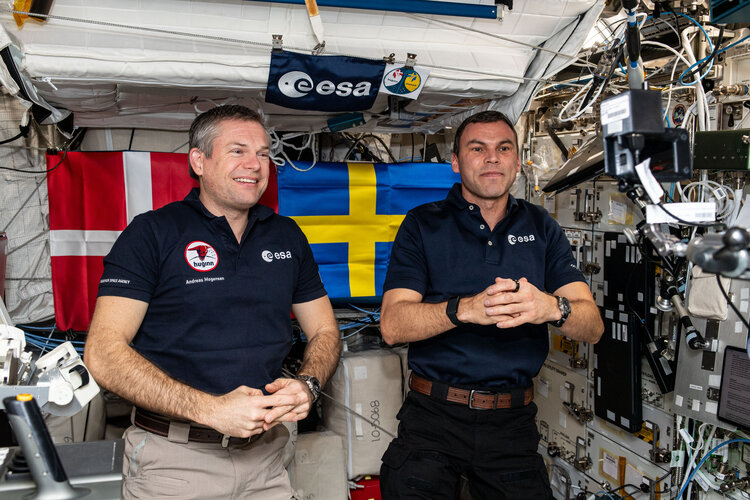 Image:
Two Scandinavians in space
Image:
Two Scandinavians in space Picturing Proba-3 for safer double satellite control
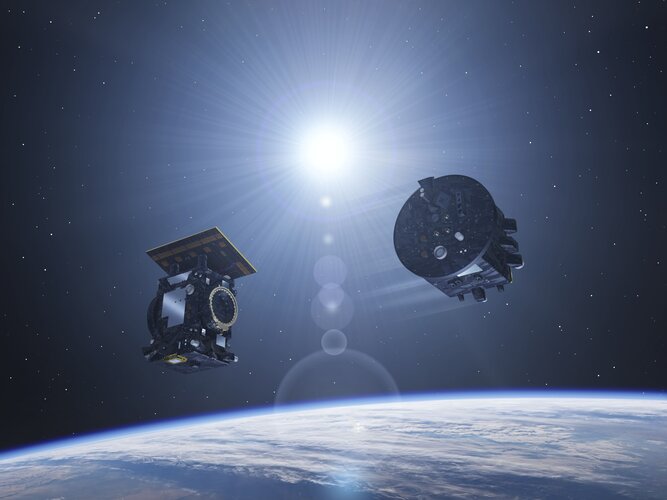
Controlling a single satellite in orbit is tough enough, but to oversee a pair of satellites as they fly in close formation around one another is likely to be extremely challenging. To simplify oversight of ESA’s coming double-satellite Proba-3 mission, its team is making sure controllers will obtain visualisations of the satellites’ relative positions in real time.
NanoAvionics Partners with LANL on Pioneering ESRA Space Mission
 Kongsberg NanoAvionics US, a leader in smallsat mission integration, has entered into a new partnership with Los Alamos National Laboratory (LANL), a premier U.S. science and technology institution, for the development of a CubeSat mission aimed at enhancing our understanding of space radiation.
The mission, designated the Experiment for Space Radiation Analysis (ESRA), will employ a 12U C
Kongsberg NanoAvionics US, a leader in smallsat mission integration, has entered into a new partnership with Los Alamos National Laboratory (LANL), a premier U.S. science and technology institution, for the development of a CubeSat mission aimed at enhancing our understanding of space radiation.
The mission, designated the Experiment for Space Radiation Analysis (ESRA), will employ a 12U C Carbice and Blue Canyon Technologies partner to enhance satellite thermal management
 Carbice Corporation, an innovator in the field of thermal management solutions, recently announced its collaboration with RTX's Blue Canyon Technologies, a leader in small satellite solutions. This partnership marks a significant step in the integration of advanced materials in aerospace technology, particularly for critical spacecraft programs.
At the core of this collaboration is the Car
Carbice Corporation, an innovator in the field of thermal management solutions, recently announced its collaboration with RTX's Blue Canyon Technologies, a leader in small satellite solutions. This partnership marks a significant step in the integration of advanced materials in aerospace technology, particularly for critical spacecraft programs.
At the core of this collaboration is the Car BAE Systems nears completion of next-gen military GPS user equipment
 BAE Systems (LON: BA), a leader in defense and aerospace technology, has reached a pivotal phase in its development of an advanced military Global Positioning System (GPS) receiver and a cutting-edge semiconductor. The company recently announced the successful completion of the Critical Design Review (CDR) for its Military GPS User Equipment (MGUE) Increment 2 Miniature Serial Interface (MSI) pr
BAE Systems (LON: BA), a leader in defense and aerospace technology, has reached a pivotal phase in its development of an advanced military Global Positioning System (GPS) receiver and a cutting-edge semiconductor. The company recently announced the successful completion of the Critical Design Review (CDR) for its Military GPS User Equipment (MGUE) Increment 2 Miniature Serial Interface (MSI) pr Government Connectivity Enters New Era: MetTel and Partners Highlight LEO Satellite Solutions
 MetTel, a company recognized by Gartner for its leadership in Managed Network Services, is planning a private event in Washington, D.C., on February 7. The event, named "Space Age Communications: Bridging Network Gaps for Government Agencies," aims to present the capabilities of low earth orbit (LEO) satellites for government network connectivity.
The need for dependable, efficient, and se
MetTel, a company recognized by Gartner for its leadership in Managed Network Services, is planning a private event in Washington, D.C., on February 7. The event, named "Space Age Communications: Bridging Network Gaps for Government Agencies," aims to present the capabilities of low earth orbit (LEO) satellites for government network connectivity.
The need for dependable, efficient, and se 
